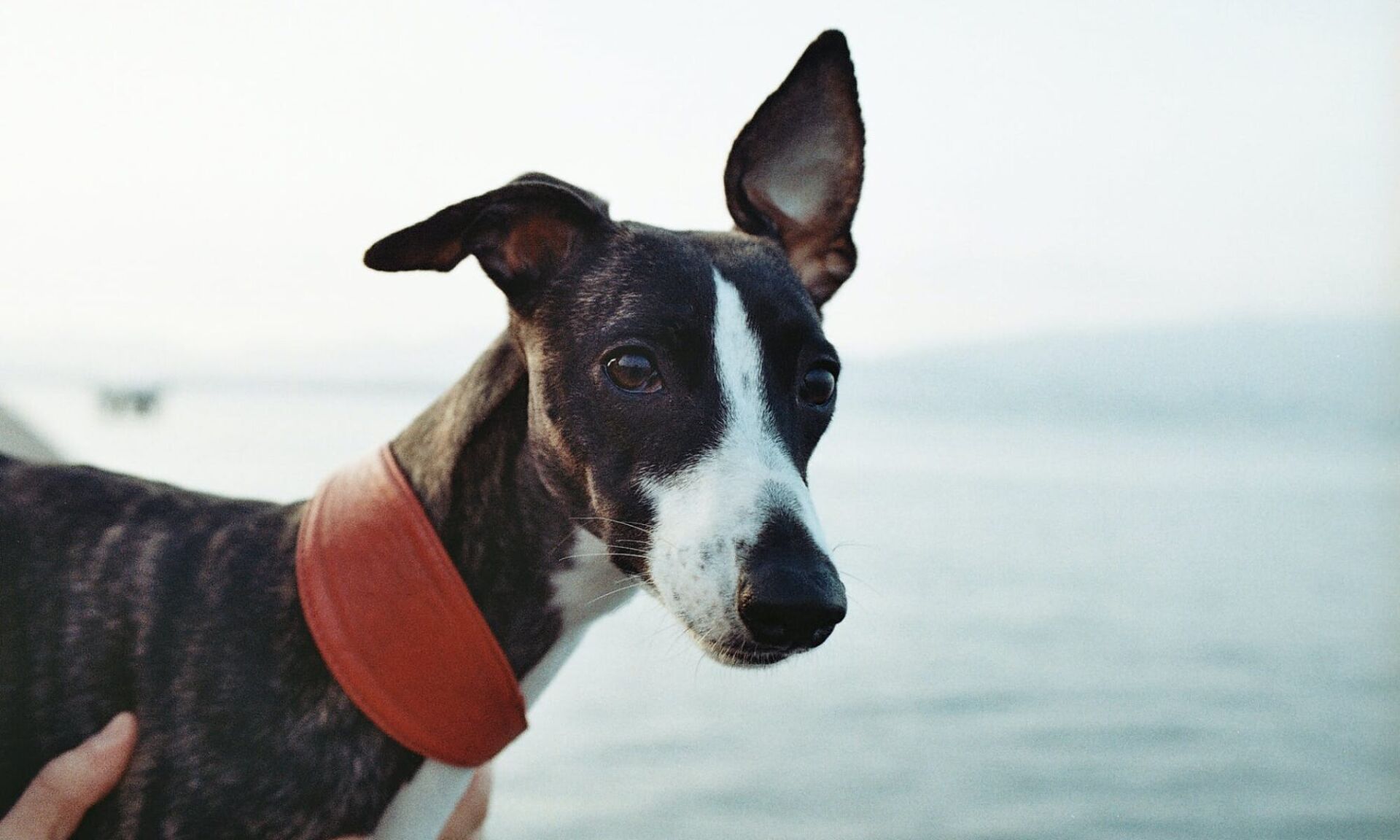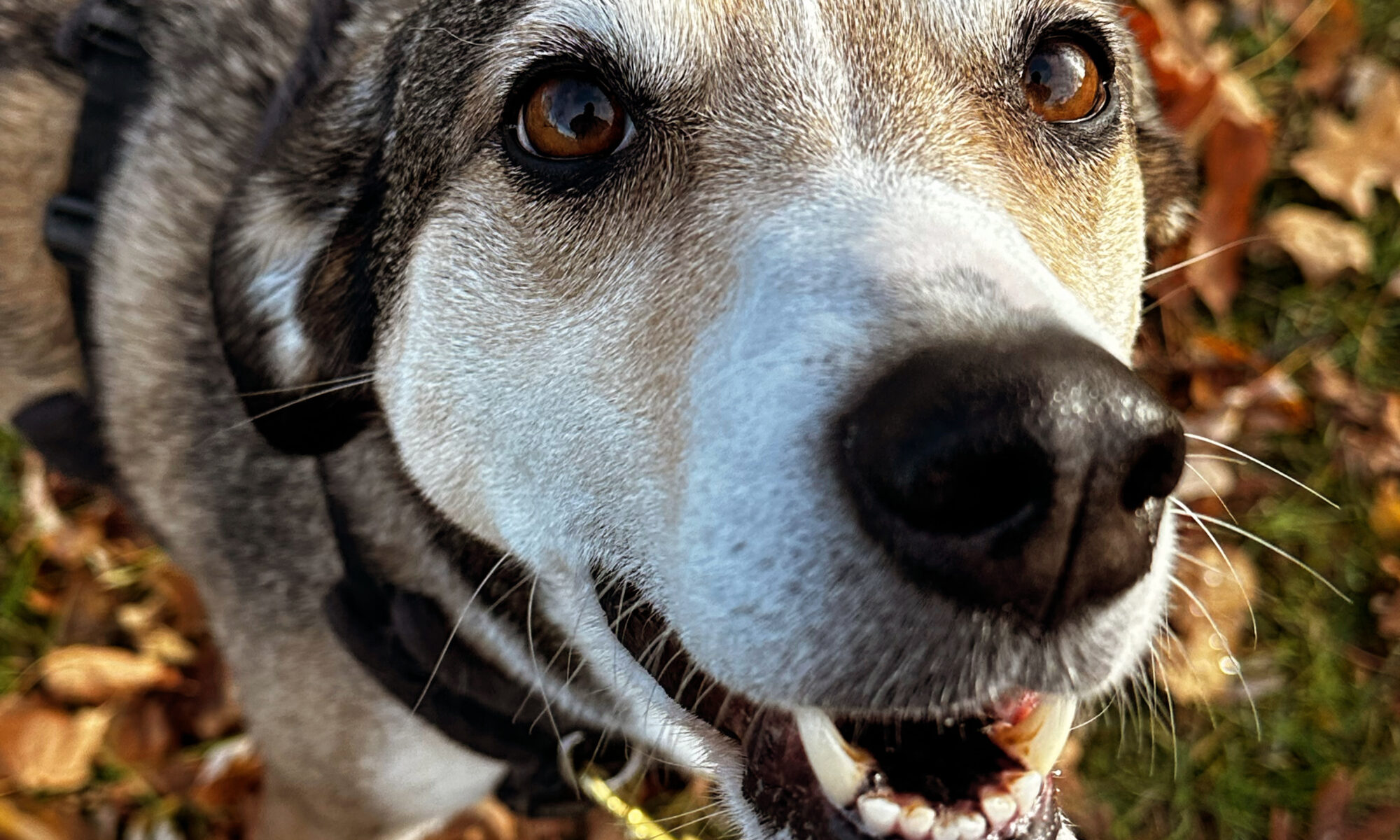
Our furry family members come into our lives and fill up our hearts. When they leave, they take a piece of our heart and soul with them. Navigating the loss of a pet is a difficult and heartbreaking process. Be sure that you are prepared for the process and know about the many options available to you.
Yesterday, I had to say goodbye to my amazing dog, Finn.
Last week, Finn, my 8-year-old, three-legged pup was off his food a bit. I took him to the vet, thinking he may have cracked a tooth or having some underlying pain. I was floored when x-rays revealed that his chest was filled with fluid that was compressing his lungs. We rushed him down to UW Madison Veterinary School clinic and they confirmed cancer.
Their treatment plan included leaving him there for the weekend to have a CAT scan and further diagnostics. Possible options included: 1) Distinct, operable cancer masses that would require major surgery … to gain just a few extra months. 2) Inoperable masses that could possibly be treated with chemo … to gain only a few weeks. 3) Take him home and let the disease run its course … likely giving us only a few days. Rather than leaving him alone and scared in the clinic, we decided to bring him home and let him be Finn for as long as he was able. Yesterday, he left us.
Did I think about trying surgery or chemotherapy in the hopes of gaining a bit more time with my beautiful boy?
Sure I did … but only for a moment. I strongly believe that it is our responsibility to think in terms of what is best for the individual in question. Surgery or chemo might have given us more time with Finn, but would it be quality time? With the condition of his lungs, would he even survive surgery? If he did, recovery from major chest surgery for a three-legged dog would be a long road. Chemotherapy would leave hiim feeling sick. Would any of these options provide Finn with additional QUALITY time? Almost certainly not. This is why we chose to do nothing. To just love him and enjoy what little time we might have with him. Today, I am feeling lost and bereft, but also feeling blessed to have had 8 wonderful years with my magnificent boy.

Providing a good death is the responsibility of pet owners.
Finn’s passing was hard and it was heartbreaking, but it was a good death. We are obligated to give our dogs a good life and a good death.
In her article, “How Do You Know When to Put a Dog Down?”, Dr. Liz Bales suggests that you consult with your veterinarian and ask yourself the following questions:
- Does my dog have a good quality of life? Are they eating and drinking? Are they able to urinate/defecate? Do they enjoy human interaction?
- Does my dog have more good days than bad?
- Is it possible for my dog to recover with a treatment plan that I can commit to both financially and personally?
Many times, when faced with the loss of a beloved pet, we struggle to know what is the best plan.
“Your veterinarian may be able to provide you with medications, treatment options, and changes that you can make at home that may help improve your dog’s quality of life. However, it may be that there are no additional medical or home interventions that will cause enough improvement to bring your dog back to an acceptable level of comfort. If that is the case and you answer “no” to one or more of these questions, it’s time to talk about euthanasia with your veterinarian.”
You may choose to keep your pet at home and provide palliative care rather than opting for treatment or invasive surgery. If you choose this option, be sure to work with your veterinarian so that you are able to provide the care that your dog will need. Write down a schedule for medication administration. Ask your vet if you are unsure of a dosage, timing or administration procedure.
Have supplies on hand: urine pads if your dog becomes incontinent, a help-em-up harness if your dog has mobility or stability issues, high value foods if your dog has refusing food, etc. Be prepared to clean up messes in the house and have some sleepless nights. Can you take time off work to be with your pet or do you have friends/family who can help out? Self-care is important. Allow family and friends to provide support and ask for help when you need it.
How do you know when it is time to let your dog go?
You may be told that “he will let you know when he is ready.” You may be knowledgable and objective enough to see the changes in your dog that will tell you when it is time, but a Quality-of-Life Scale is an excellent tool to help you make the decision. Lap of Love is a great resource for end-of-life care and decisions. Here are some QOL resources that you can find at Lap of Love:
- Quality of Life Assessment Tool
- Quality of Life Scale
- Quality of Life Daily Assessment Calendar
- Online Quality of Life Assessment Calculator
There are many decisions to be made when dealing with the loss of a pet. I would encourage you to think about them ahead of time so that you are not left making quick decisions “in the moment.”
In-home euthanasia is not available everywhere, but it is a good idea to ask your veterinarian if you would like to explore this option.
Some veterinarians don’t advertise this service, but will do in-home euthanasia for their clients. We had the option of having our vet come to our home for the procedure. However, I was worried that the stress from the other dogs would cause too much anxiety or even fear for Finn. Other pets and children are something else to consider when making this decision. VetAngel is an in-home pet hospice and euthanasia provider directory. This can help connect families with local veterinarians offering compassionate, end-of-life pet care in the comfort and familiarity of home.
What about euthanasia at my veterinary clinic?
Some vets may need you to schedule your appointment in advance. While others may be able to squeeze you into their schedule. If your vet’s practice has multiple vets, you may need/want to schedule in advance if you want to be sure that your pet’s vet is able to see you through the procedure.
We didn’t know how fast things would go. However, our vet assured me that they could fit him in on a same day appointment, so we decided to wait to schedule. Unfortunately, Finn’s vet was not working yesterday, but the vet and vet techs that worked with us were fantastic. A room had been prepared with a pile of soft blankets on the floor. They had set out yummy treats and a stamp pad and paper for making a pawprint keepsake. They gave us time and privacy to settle him in and say goodbye – before and after. While I have been through the process with several dogs, the vet explained what would happen and gave us plenty of time to process each step.
From the sedative to the placement of the catheter in his vein to the administration of the euthanasia medication, they were careful and kind throughout. My sweet boy passed peacefully in my arms.
After-life decisions are another thing to consider.
Whether you choose cremation or burial, there will be decisions that you will have to make. Explore your options so that you have a plan in place. You may want to bury your dog at home, in a pet cemetery or even have his ashes interred with your or a family member. With cremation, you will most likely have the option of a group cremation or a private cremation. A private cremation is more expensive, but you will have the option of having your pet’s ashes returned to you. Whatever you choose, be sure to check to see if the service is available in your area. Also, check that your state/municipality allows for your chosen option(s). For example, some states do not allow backyard burials, some places are off limits for the spreading of ashes.
What about memorializing your pet?
Do you want a special urn? This could be something that you order at the time of cremation or it could be a special container that you want to have handcrafted to hold his ashes. There are many keepsake ideas for ashes – jewelry, a planting, pottery, a painting, blown glass sculptures, etc. Perhaps you want to have a custom burial marker made or want to set up a scholarship or make a donation in your pet’s name. Do you want a last photo of your pet or even a pawprint or photo of you holding your pet’s paw? Write these things down so that you remember to do this.

The loss of a beloved pet is a difficult and heartbreaking process.
Hopefully, you have a strong support system that you can lean on as you process this loss. Unfortunately, this is not always the case. Sometimes those around you brush off the death of a pet. Sometimes they simply do not understand the depth of your grief. Please know that whether you have a support network or not, there are professionals who specialize in helping pet owners cope with the loss of a pet.
If you are on social media, you might think about joining a pet loss support group. On Facebook, you can find groups to support owners who have lost a pet and owners who have terminally ill and older pets. I have a group that is open to anyone who has lost a pet (regardless of how) or is anticipating a loss – Paws & Remember Pet Loss Support Group. If you are faced with behavioral euthanasia for your dog, Losing Lulu is a wonderful facebook group specifically created to support dog owners who have had to make this decision. The Losing Lulu website has resources that any dog owner may find helpful in processing their loss.
Your Dog’s Friend, a non-profit that offers many free resources and webinars on dog training and behavior have done two very good webinars on this topic.
Caring For Your Dog Through 5 Stages of Your Dog’s Lifespan presented by E. Kathryn Meyer, DVM with Peace & Comfort.
Grieving – coping with the recent or anticipated loss of your pet presented by Sandra Grossman with PetLoss Partners.

Kerrie Hoar, M.S., CDBC, CPDT-KA, ADT, FFCP
Kerrie Hoar has a master’s degree in Biology and is a certified dog behavior consultant, certified professional dog trainer and fear free professional. She owns Crimson Hound LLC dog training in La Crosse, Wisconsin.

